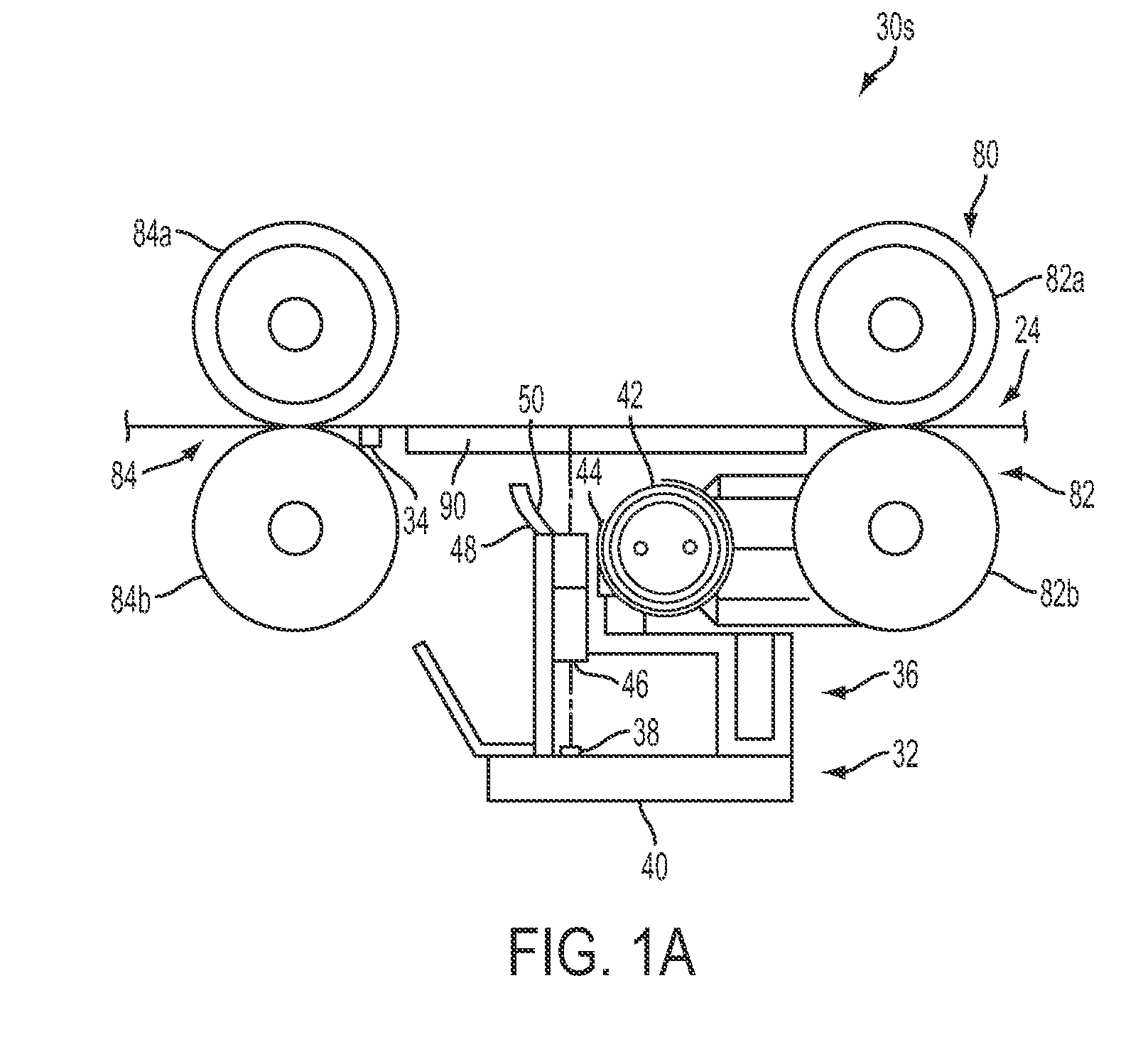High productivity single pass scanning system
a scanning system and high-efficiency technology, applied in the field of scanners and scanning documents, can solve the problems of reducing scanning efficiency, inefficiency use of memory resources for mixed-size documents, and intransparent user choice between these scanning modes
- Summary
- Abstract
- Description
- Claims
- Application Information
AI Technical Summary
Benefits of technology
Problems solved by technology
Method used
Image
Examples
Embodiment Construction
[0016]According to an aspect of the disclosure, a scanner enables full productivity and individual image size detection, without user intervention for mixed size originals in simplex and / or duplex scanning modes. More preferably, the scanner provides high-productivity single pass scanning while preserving the image size for each of the document scanned.
[0017]FIG. 1 shows a scanner 10S in accordance with an embodiment. In particular, scanner 10S is configured for simplex scanning (i.e., single-sided scanning of document).
[0018]Scanner 10S generally includes upper and lower frame members 12 and 14. Upper and lower frame members 12 and 14 may be rectangular or box-shaped members, connected by a hinge member (not shown) along lower and upper rear edges of frame members 12 and 14, respectively. Upper and lower frame members 12, 14 may include a document handler and a platen, respectively. In one implementation, upper and lower frame members 12 and 14 are separable in a clam-shell fashion...
PUM
 Login to View More
Login to View More Abstract
Description
Claims
Application Information
 Login to View More
Login to View More - R&D
- Intellectual Property
- Life Sciences
- Materials
- Tech Scout
- Unparalleled Data Quality
- Higher Quality Content
- 60% Fewer Hallucinations
Browse by: Latest US Patents, China's latest patents, Technical Efficacy Thesaurus, Application Domain, Technology Topic, Popular Technical Reports.
© 2025 PatSnap. All rights reserved.Legal|Privacy policy|Modern Slavery Act Transparency Statement|Sitemap|About US| Contact US: help@patsnap.com



